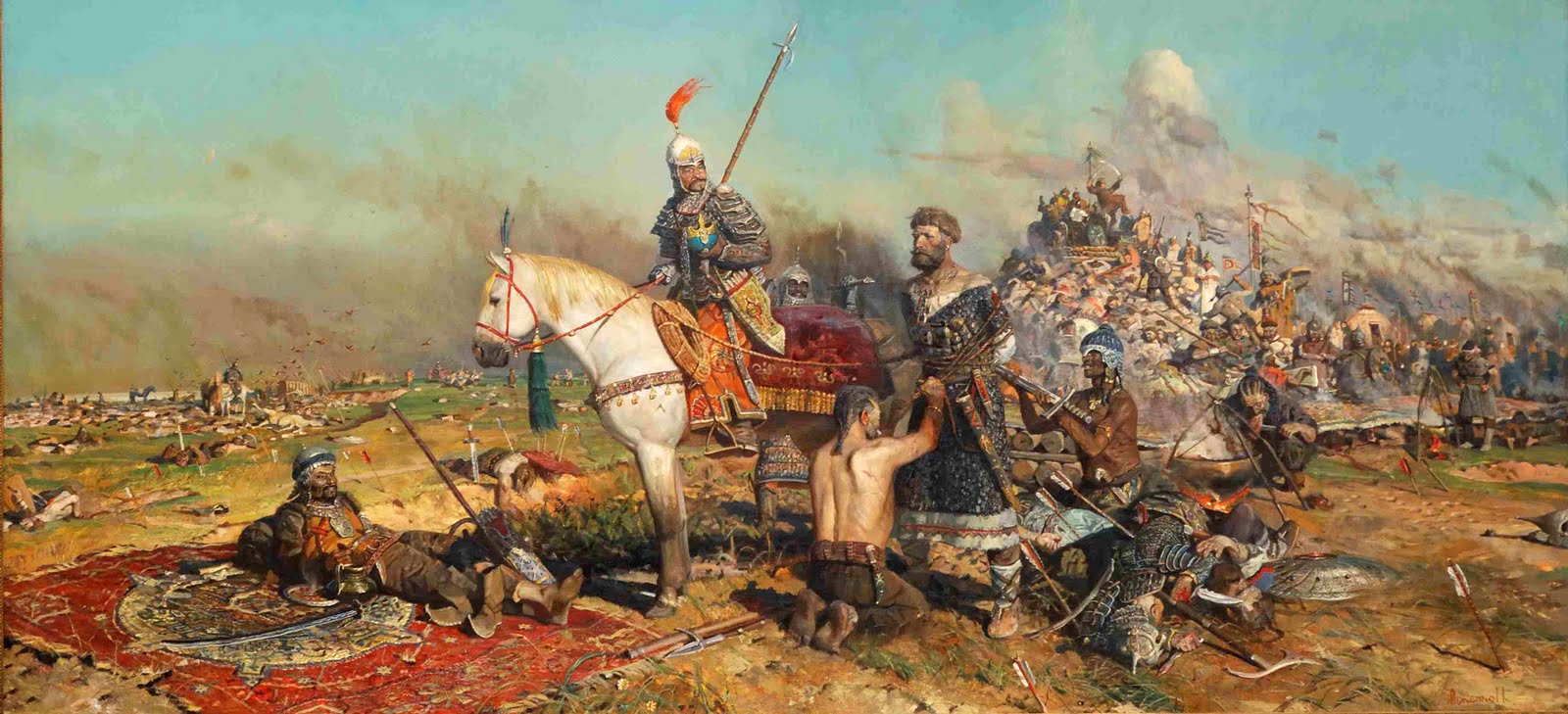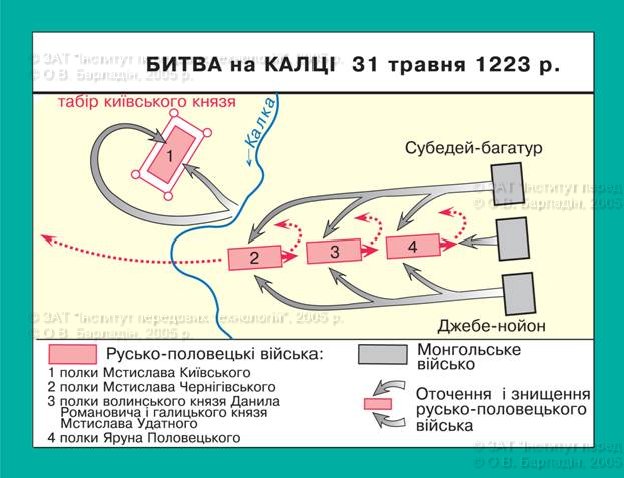"In 1222 the dreadful Mongols began to threaten dangerously the tribal union (Khanate) of the Kipchaks, in their eastern borders. The Kipchak khanate covered a huge area of Eurasian steppes from the modern southern Ukraine to the Aral Sea in Central Asia. The union of the Kipchaks (known also as the "Cumans" to the Byzantines and as the "Polovtsy" to the Russians) consisted of Turkish, Finno-Ugric and some Mongolian and Northern Iranian tribes. It seems that the Turkish language had prevailed also in most of the non-Turkish tribes. According to the most probable theory, the khanate of the Cumans/Kipchaks came from the union of two older tribal federations, those of the Kipchaks and the Cumans, hence the double name.
The Russian territory extended to the northwest of the Cumans , and during this period was politically split into independent principalities. The relations between the Russians and the Cumans were usually, if not generally, hostile, but the Mongolian threat forced them to reconcile. Russians and Kipchaks used to unleash devastating raids on each other's territories.
At the beginning of 1223, the Mongolian threat forced the khan (khagan) of the Western Cumans to seek the help of Mstislav, prince of the Russian principality of Galicia. Mstislav the Brave as he was called, was a hero whose reputation exceeded the Russian borders. Mstislav had realized the lethal threat of a Mongolian invasion in the Russian territories, and immediately called all his Russian counterparts in council in Kiev, with the presence of the Cuman rulers. In Kiev, the metropolis of medieval Russia, they described to the Russian princes the martial prowess and ferocity of the Mongols. In the end, the princes decided on a joint campaign against the invaders.
In mid-March 1223 the Russian armies began their preparations, and in early April they began gathering in the default starting point of the campaign. Only the southern Russian principalities essentially participated in the campaign. The principalities of Chernigov and Smolensk were involved under the High prince of Chernigov Mstislav Sviatoslavich and his tributary princes of Kursk (the famous Oleg), Putivl and Trubchev. The second group of the Russian forces came from the principalities of Galicia-Volynia (Galich-Volyn), led by the High prince Mstislav Mstislavovich, who first responded to the call of the Cumans. Those troops came from Galicia and Volynia under the princes Danilo (Daniel) of Volynia, Mstislav Yaroslavich Nemoy and Izyaslav Ingvaryevich…"
Full article here
link
Part 2.
"The main dispute between the Russian princes concerned their doubt if they should cross to the left bank of the Dnieper, and then march in the open steppe. Many believed that they should not do it, in order not to give battle in an excellent battlefield for the Mongol cavalry. Although the opposite point of view prevailed, the aforementioned estimation proved to be the right one. Indeed, Subotai and Djebe intended to lure the Russo-Cuman army deep into the steppe, surround it there and destroy their enemies. When the allies had marched enough into the steppe, into the land of the Cumans/Kipchaks, the Mongols began to wear their army with sudden deadly attacks of small detachments.
On 31 May 1223, the allied army arrived in the area of the river Kalka, whose site is still unknown. However it is strongly believed to be the modern small river Kalchik in eastern Ukraine, pouring into the Sea of Azov. The Mongols were now very close and the Russians clashed with their vanguard, which they repulsed. After this first success, the allied princes heot success, the alliesld consultations in a war council about whether they had to march further or stay there and prepare for defense. It was the most turbulent council, with intense disagreements and conflicts. Eventually the princes did not agree. The aggressive Mstislav of Galicia crossed the Kalka River with his army, along with his tributary Danilo of Volynia, determined to go alone on the march. Soon they were followed by Mstislav Sviatoslavovich with the army of Chernigov and Smolensk. The Cuman/Kipchak horsemen were marching in front of the Galician-Volynian troops. The Cumans who also insisted on the march, wanting to rid their homeland of the Mongol invaders, were the vanguard of the allied army. Kalka river was in the Cuman territory.
However the allied forces were broken up, because the numerous army of Kiev was left behind after his own prince Mstislav had refused to follow the march. But also between the marching allied armies, large gaps were turn up. This was the opportunity that Subotai awaited so patiently for. He immediately ordered the attack of his murderous nomad riders, who until then were retreating purportedly to lure the allies into their trap…"


Full article here
link
Hope you enjoy!.
Amicalement
Armand

